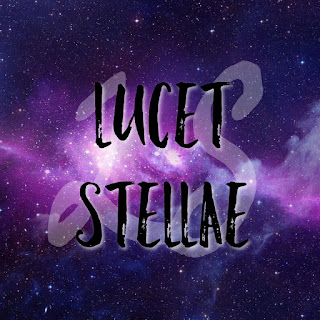The Elizabethan Age belonged to the Tudor Dynasty
(England). It is considered as an extension of Renaissance. The Elizabethan Age
is often referred to as The Golden Age in English and also The Nest of Singing Birds.
 |
| The Tudor Dynasty |
This
"golden age" represented the peak of the English Renaissance and saw the
flowering of poetry, music, art and literature. The era is most famous for its theatre, as renowned
writer William Shakespeare and many others
composed plays that broke free of England's past style of theatre. It was an
age of both exploration and expansion abroad, while back at home, the Protestant Reformation became more
acceptable to the people, most certainly after the Spanish Armada was repelled. It was also the end of the
period when England was a separate realm before its royal union with Scotland.
 |
| Spanish Armada |
There
was the Elizabethan content and zest for life. Foreign influence, especially of
France and Italy, did much to stimulate the growth of the Elizabethan lyric.
Also, there was a renaissance of music. The Elizabethan carved for music. The
richer sect had their own musicians to while away their leisure hours.
Countless books of music were published of which Thomas Campion's Books of Airs
the most popular. It was an age of poetry and romance. New wonders were being
discovered almost every day. The atmosphere was surcharged with romance, and
song is the very breath of romance. Elizabethan
Age was considered as The Nest of Singing Birds for these very reasons.
It was during this age when the thoughts were
liberated as the period was romantic in many ways. As thoughts got liberated
and people rebelled against religion, mainly against Roman Catholic Churches
which resulted in their reformation.
During this period no restraint human imagination was let loose.
It was the period of inventions and discoveries. Many
theories and concepts related to astronomy changed including both Heaven and
the Earth. The concept of the Earth being the centre of the universe upturned
man’s ego and this was reflected in literature.
Another prominent characteristic of this age includes
veneration for classical works. Writers of this age were sandwiched between
previous age which marked a shift from an old system to a new one and the
present age of discoveries.
Though many great writers of the age were highly
educated and had great admiration for classical works, this age witnessed the
emergence of what is known as National Literature. Till now in the reign of the
Roman Empire, Latin language had a superiority in comparison to other
languages. But with the decline of Roman Empire which was resulted by the fall
of Constantinople (1453), Christians lost all the territories to the Ottoman
Empire. As a result, Christian monks fled to west and spread learning which
resulted in Renaissance. Also, as Latin lost its supremacy; regional languages
gained prominence. Eminent writers like Shakespeare, Bacon, Sidney wrote in
regional languages. Now that the writings were more available in regional
languages, the masses began to take interest in literature. The common people
which knew only regional language, got access to the works. Moreover, the
invention of printing press (1439) also helped people get access to more books.
Spenser
introduced the ‘Spenserian Stanza’ and from his works, we got the impression of
inventiveness & intrepidity. On the whole, the outlook of the writers
during the age was broad & independent. English Patriotism developed and the rise of
regional language symbolised how people were proud of their nation. This began
the romantic quest for the remote, the wonderful and the beautiful. All these
desires were abundantly fed during the Elizabethan age, which is the first
& the greatest romantic epoch (period).
English Novel made its first
proper appearance during this age.
UNIVERSITY WITS
In the Pre-Shakespearian Drama, there existed Shakespeare’s
immediate predecessors known as University Wits. They were prominent in the
1580s. They are so called because they were associated with the university of
Cambridge (Robert Greene, Thomas Nashe, Christopher Marlow) or Oxford (John
Lyly, George Peele, Thomas Lodge). Thomas Kyd attended neither of these
universities, but is still included because he wrote in the style of the wits.
They had a fondness for heroic themes, and thus their works had heroic
treatment with heroic style. Their themes too were usually tragic in nature
like Shakespeare.
IMPORTANT AUTHORS AND WORKS
·
Edmund Spenser (1552-1599)
The
Fairie Queene (1590)
Astrophel
(1595)
Amoretti
(1595)
Epithalamion
(1595)
Prothalamion
(1596)
·
Sir Philip Sidney (1554-1586)
Arcadia
(1580)
Astrophel
and Stella (1591)
Apologie
for Poetrie (1595)
·
Francis Bacon (1561-1626)
Essays
(1597)
Novum
Organam (1620)
The
Advancement of Learning (1605)
The
New Atlantis (1629)
·
John Lyly (1554-1606)
Eupheus:
The Anatomy of Wit (1578)
Endymion
(1588)
The
Woman in the Moon (1595)
 |
| John Lyly |
·
George Peele (1556-1596)
The
Famous Chronicle of King Edward I (1593)
The
Old Wives’ Tale (1595)
A
Farewell to Arms (1590)
·
William Shakespeare
 |
| William Shakespeare |
Four
major tragedies:
Hamlet (1601)
Othello (1604)
Macbeth (1605)
King Lear (1605)
Long
narrative poems:
Venus and Adonais (1593)
The Rape of Lucrese (1594)
Comedies:
The Comedy of Errors (1593)
The Merchant of Venice (1596)
As You Like It (1600)
Much Ado about Nothing (1598)
·
Ben Jonson (1572-1637)
The
Alchemist (1610)
Volpone
or the Fox (1605)
Every
Man in his Humour (1598)
Every Man Out of his Humour (1599)
-Ayesha Sana PNP













☺👏👏👏👏
ReplyDeleteAmazing 😍😍
ReplyDeleteVery interesting one👍🏻👍🏻
ReplyDeleteWow👏
ReplyDeleteNice♥️👏👏
ReplyDeleteGood one!!👏
ReplyDelete👏👏👏👏
ReplyDelete